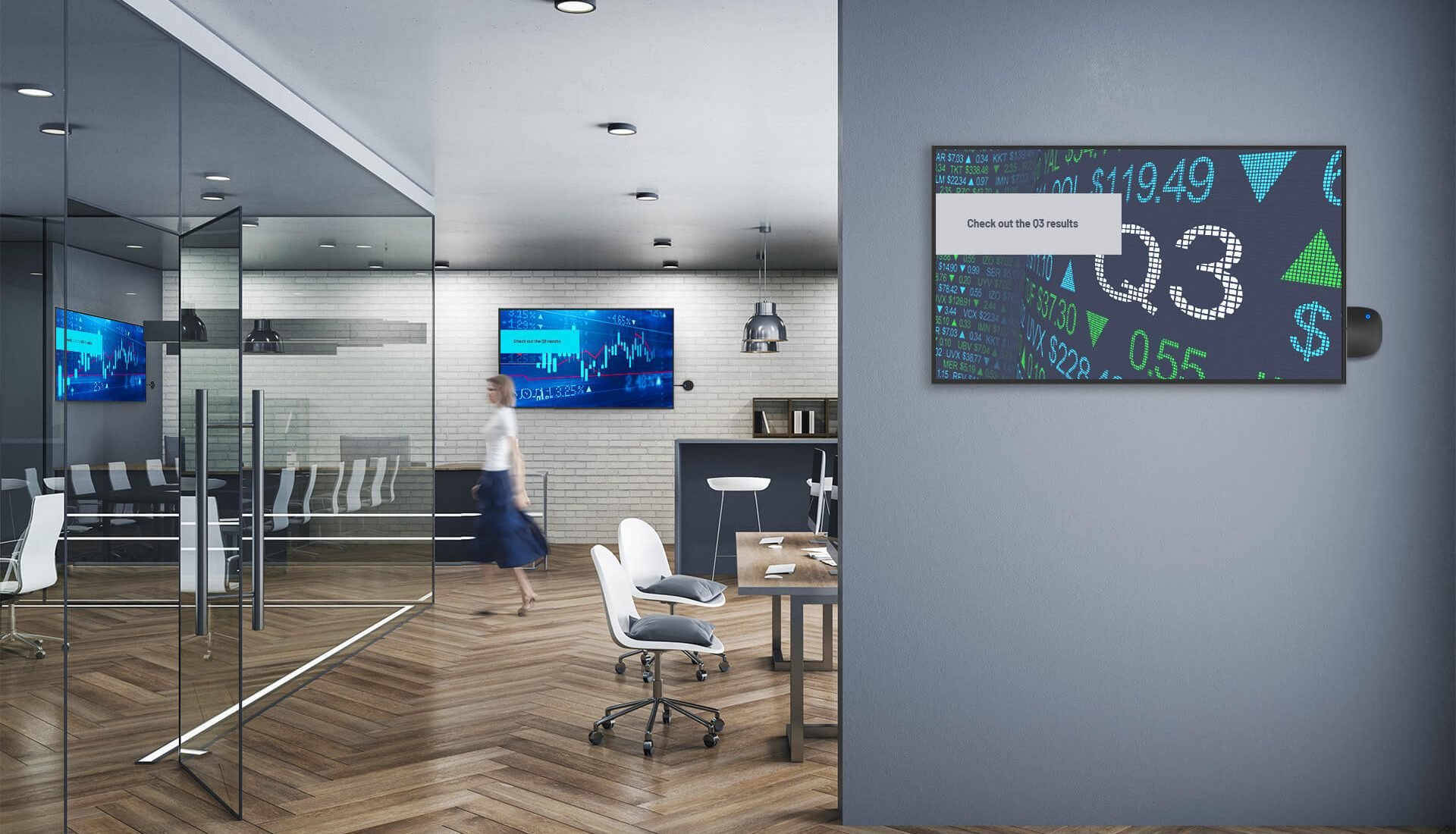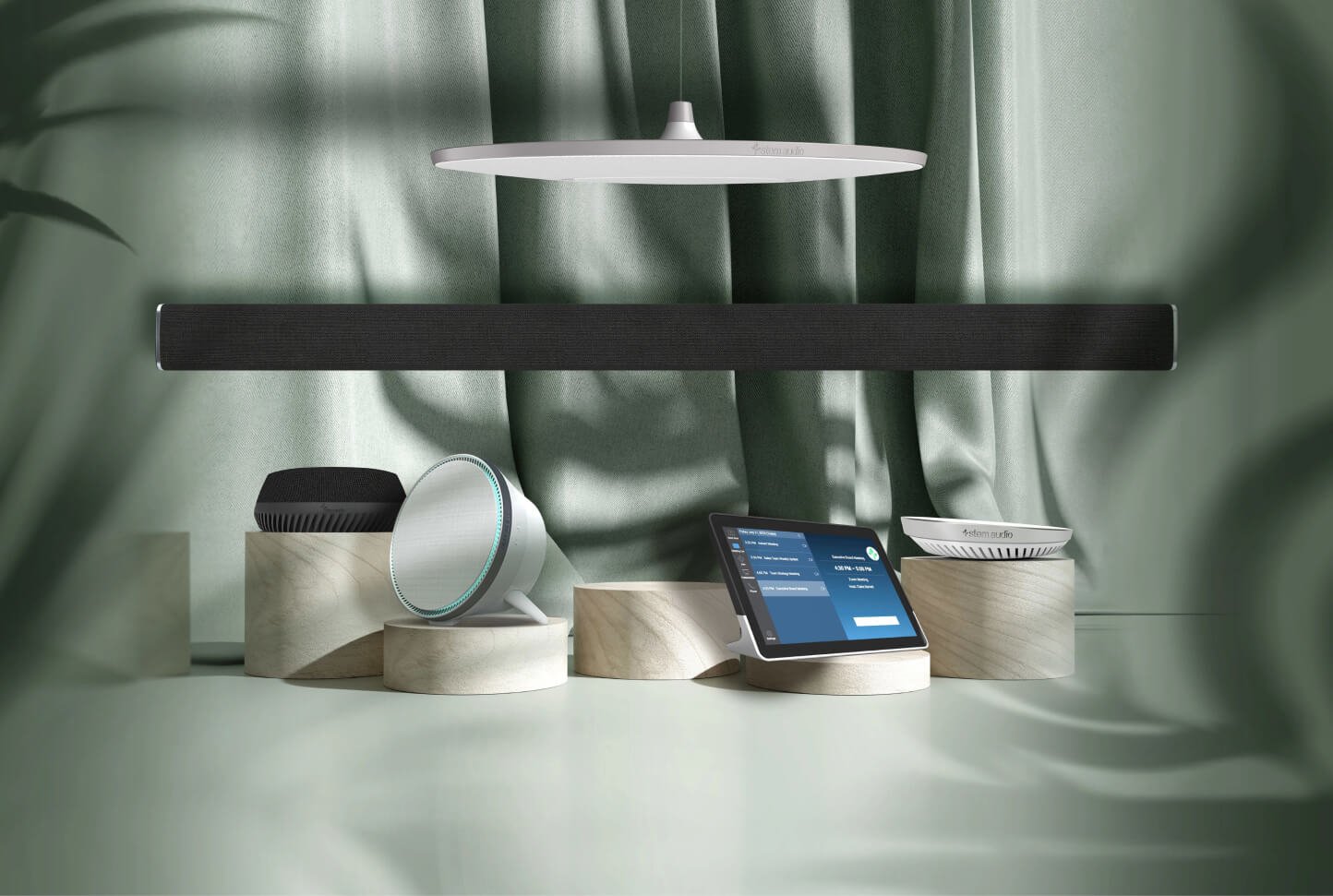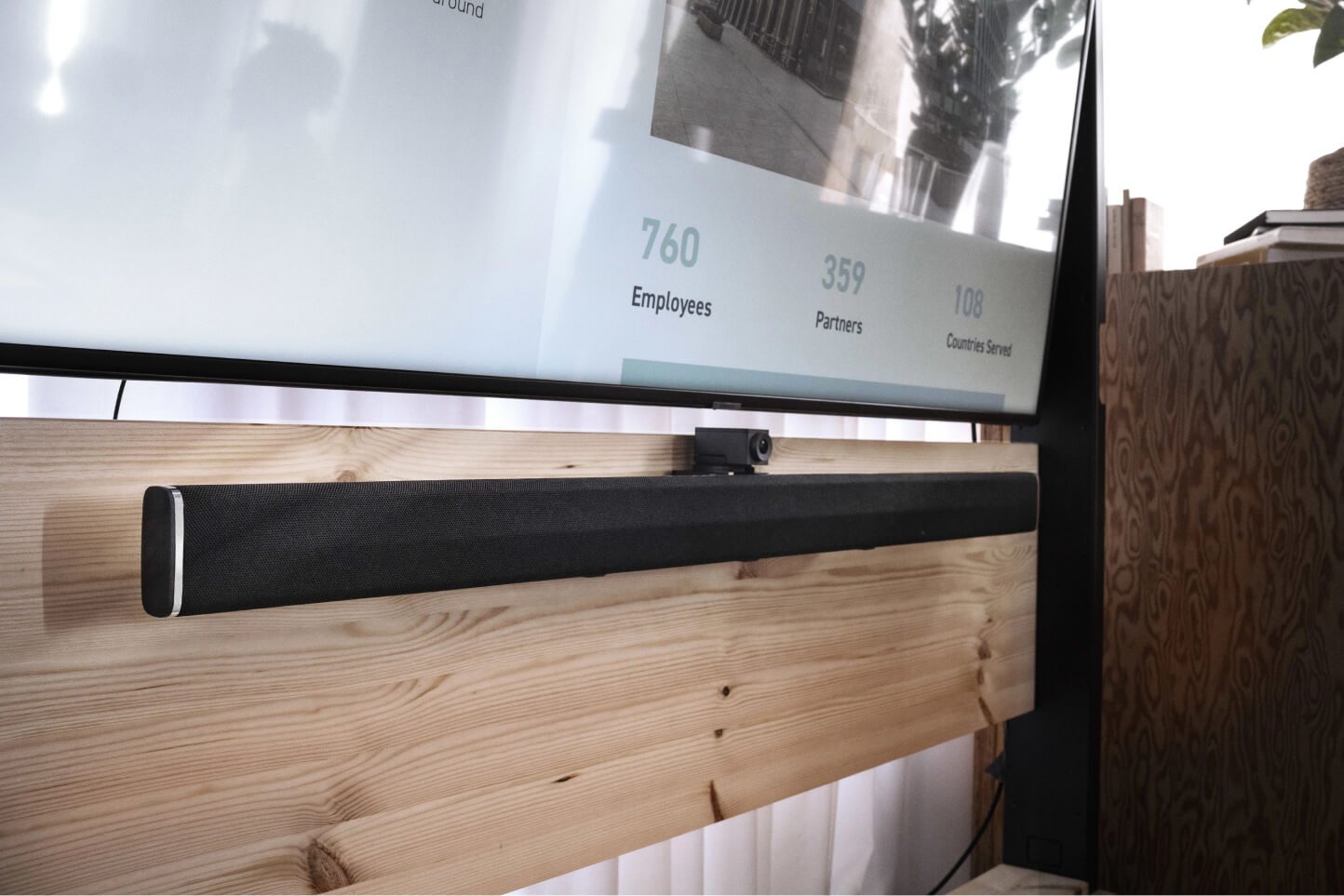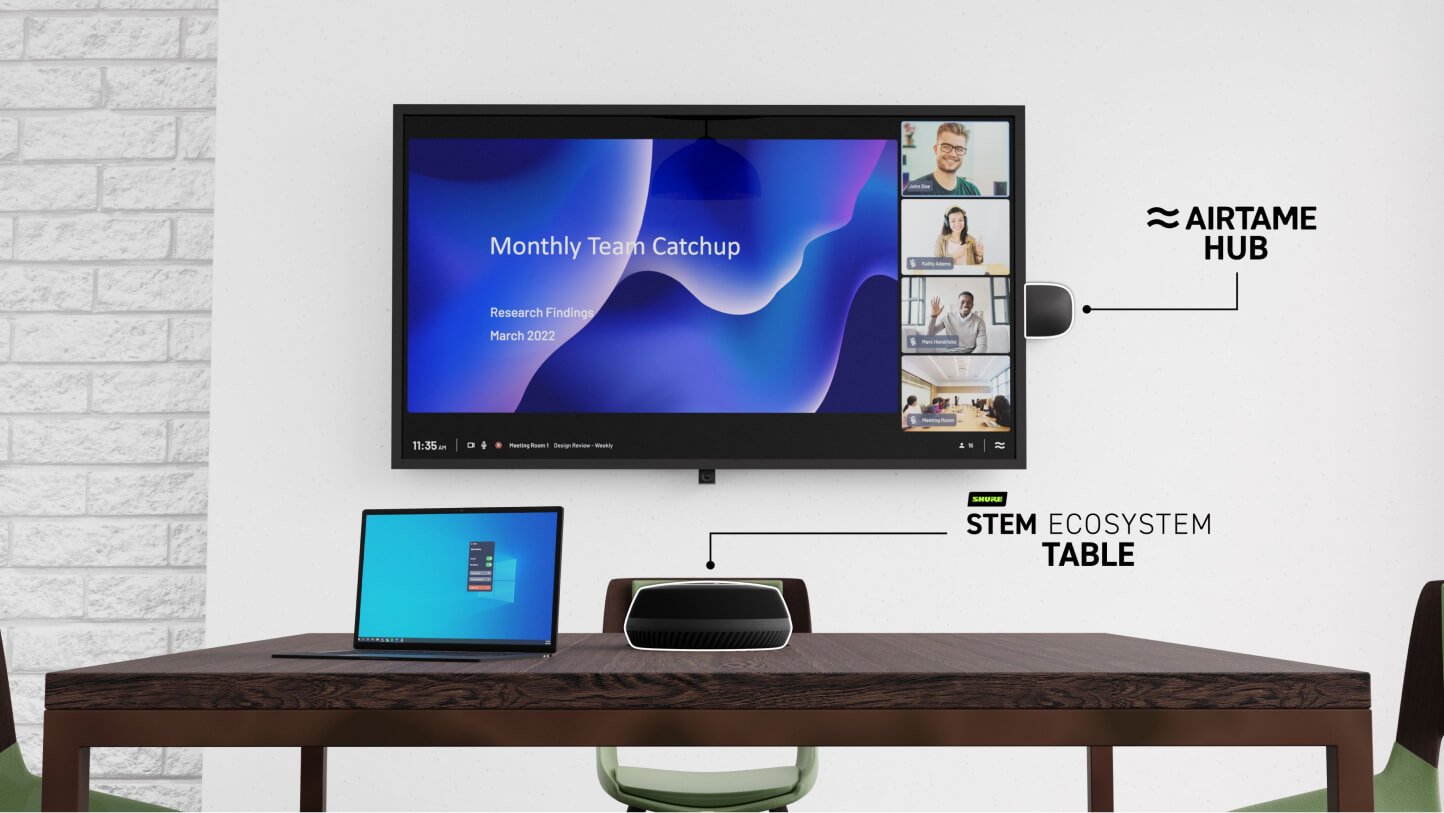Top 5 Conferencing Tech Essentials For Your Coworking Spaces

This blog post is written by our alliance partner, Shure.
With the modern work landscape experiencing a rapid evolution, coworking spaces have experienced explosive levels of growth thanks to an ever-growing number of professionals who choose to work remotely and startups looking to keep costs low. The exceptional growth in this industry presents distinctive challenges for new entrants in the coworking space provider sector, who must differentiate themselves in a progressively competitive market.
In years past, these on-the-go professionals could have been content with spaces that simply provided power, WiFi, and a contemporary-modern aesthetic. As more competitors enter the field, coworking space providers must elevate their efforts to distinguish themselves. The key to drawing in picky digital nomads is in providing seamless technology solutions that foster convenience and productivity.
One of the critical areas that is pivotal to member satisfaction, yet is often overlooked, is the conference room. These rooms are often plagued with poorly “optimized” technology setups that either underperform or have a complex setup process that deters new users. Worse yet, many of these solutions are created room by room, meaning the steps to connecting to the conference system in one room may be different from another.
Standardizing your conference room technology with a scalable solution can help win the hearts and minds of fickle clientele that can find greener pastures elsewhere. In fact, with only a few key tech investments, you can stay a step ahead of the competition by providing a conferencing experience that gives access to both professional quality AV and the one-click convenience modern users expect.
1. Audio Ecosystem
Despite video conferencing emerging over the past few years as the definitive choice for professional communications, more than half of those professionals report poor quality audio during meetings as a persistent problem. The main culprit? Hastily put together DIY audio systems that either can’t fully cover a room or are made up of a jumble of audio endpoints that aren’t designed to work together.

This is where audio ecosystems come into play. Audio ecosystems like the Stem Ecosystem are made up of hardware audio endpoints that are synchronized and optimized by a software component, resulting in an audio experience free from interruptions and glitches commonly found in a typical DIY sound system.
The Stem Ecosystem is made up of four audio endpoints – Table, Wall, Speaker, and Ceiling – that can be mixed and matched to outfit rooms of nearly any size or layout. For example, stem devices like the Stem Table and Wall can be used as standalone speakerphones for smaller spaces or can be combined with a Ceiling and Speaker to create a larger audio ecosystem for bigger rooms.
The Stem Ecosystem platform comes with tools that allow you to create the best audio quality possible for your members. RoomDesign allows you to digitally recreate your room to map out your device placement ahead of time. RoomAdapt lets your devices adjust their settings to adapt to the unique acoustic properties of your space. RoomCheck provides you with a heatmap overlaid on top of your RoomDesign that visualizes the audio pickup zones for your ecosystem. The platform also allows your IT team to manage your ecosystem remotely, alerting them to any downtime, providing usage reports, and letting them update the device firmware from the comfort of their desks.
2. Camera System
While audio brings voices into the room, the camera system is what differentiates video conferencing by bringing in the nuances of non-verbal communication. Providing higher-quality web cameras to your conferencing spaces is an easy way to distinguish your meeting rooms from your competitors.

Modern web cameras from companies like Huddly provide a suite of software tools that heighten the conferencing experience. These tools allow the camera to auto-focus on active speakers and employ auto-zoom features, which eliminates the useless dead space from the majority of the picture and allows participants to focus on the room’s occupant.
The key to using video conferencing’s inherent advantages to the fullest is allowing for seamless verbal and non-verbal communication. By making the right investments in audio and visual technology solutions, your meeting rooms will shine through to users despite the packed field.
3. Hybrid Conferencing System
One of the biggest obstacles in the way of users utilizing the meeting spaces offered by coworking spaces is the complexity of their setup. Far too many conference rooms sit empty because hooking into the conferencing system is too complicated or time-consuming.

Offering a streamlined solution like Airtame Hybrid from Airtame, allows users to connect to the room’s conferencing tools within seconds without messing with a jumble of cables. Airtame Hybrid is a hybrid conferencing system that uses the Airtame Hub device to connect each element of the conferencing system, including audio, camera, and display, allowing each to synchronize with the user’s device over a wireless connection.
This connection is established through the Airtame application, which users can quickly download on their devices upon entering the room. The application allows for instant synchronization with the user’s calendar, letting them seamlessly use the interface to start or join meetings. The Airtame app further promotes collaboration by letting users share other applications, workflows, and windows with the click of a button.
Airtame’s Hybrid Conferencing System works synergistically with the other optimized conference room tech, including the Shure Stem Ecosystem and the Huddly web camera, giving your members full access to a professional-grade conference room at the click of a button. This ease of access not only promotes collaboration but also reduces the barriers to members using your conference rooms.
4. Display

The display acts as the primary interface between your members and the remote participants they need to communicate with. While traditional flat-screen televisions with the appropriate data connectors are sufficient for most applications, coworking spaces with a budget to spare might benefit from interactive touch-screen systems. These provide superior visuals and encourage interactive presentations and brainstorming sessions.
5. Digital Signage

In addition to turning your room into the ideal one-click bring-your-own-device (BYOD) meeting space, Airtame Hybrid can also transform your conference room display into a dynamic messaging tool during downtime. Digital signage systems offer the flexibility to broadcast a variety of on-brand messaging for any member working in your coworking space.
These digital displays provide both utility to users and even offer avenues for further monetization for your business. The display can cycle through paid advertising from brand partners and provide easily accessible directions on accessing the conferencing system for first-time users. This dual-purpose functionality ensures that even when the screen is not in active use, the screen adds value through revenue-generating advertisements or by reducing the learning curve for new users.

While most industries make preparations for upcoming economic headwinds, the trajectory for the coworking space provider marketplace is nowhere but up. For the providers looking to get ahead, the road to success is paved with state-of-the-art technology solutions that emphasize convenience and ease of use. By incorporating these essentials into your conference rooms, you’ll not only enhance the user experience but also solidify your position as a frontrunner in a bustling marketplace.
If you are interested in upgrading the audio quality and accessibility of your conferencing system, you can read more about the Stem Ecosystem and Airtame Hybrid Conferencing System here.